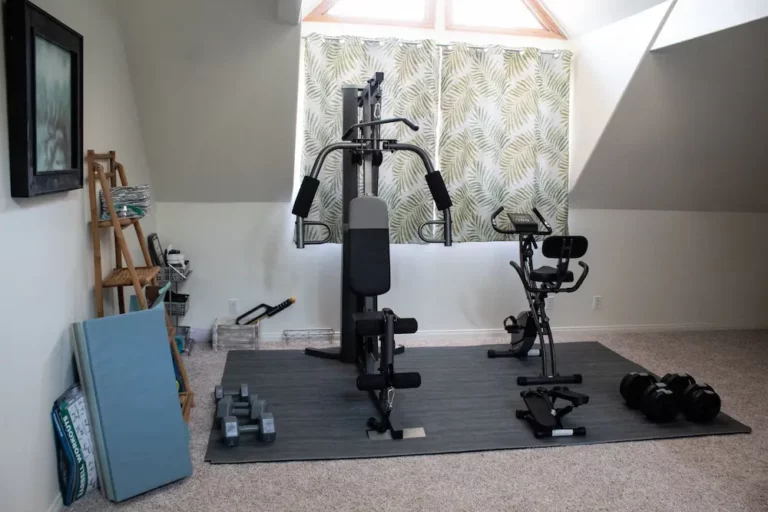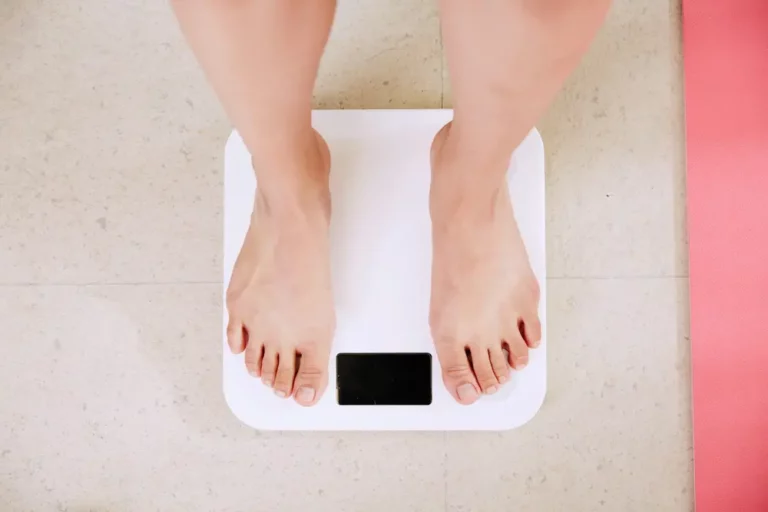Understanding Protruding Hip Bones: Causes, Treatments, and Coping
I’ve always been fascinated by the way our bodies change and adapt over time. It’s like they’re telling a story about our lives, our habits, and even our health. So, when I started noticing more discussions about protruding hip bones, my curiosity was piqued. What’s the deal with them, and why does it seem like they’re getting more attention lately?
Protruding hip bones, or those sharp edges that can sometimes be seen jutting out are a normal part of human anatomy. But the conversation around them is anything but simple. It’s wrapped up in beauty standards, body image, and health concerns. Let’s dive into what’s behind this phenomenon and why it’s worth paying attention to.
Understanding Protruding Hip Bones
When we talk about protruding hip bones, it’s essential to know that our bodies are a mosaic of shapes and sizes. I’ve come to appreciate that this variation is not only normal but beautiful in its diversity. Protruding hip bones, in particular, have been a topic of conversation recently, not because they’re a new phenomenon, but perhaps we’re seeing a shift in how we perceive them.
To get to the heart of the matter, it’s crucial to understand anatomy. Our pelvis shapes and the distribution of body fat play significant roles in whether our hip bones are more prominent. The shape of one’s pelvis is primarily determined by genetics, so it’s not something we can change. Coupled with how our body distributes fat, which is also largely influenced by genetics, it becomes clear why some of us might have more noticeable hip bones.
But let’s not forget the impact of age on our body structure. Studies have suggested that as we age, the width of the pelvis increases. This change could potentially make hip bones appear more prominent over time. Although the increase isn’t drastic, it’s another piece of the puzzle in understanding our body’s evolution.
We often hear about “hip dips” or “violin hips,” referring to the inward curve below the hip bones. Much like protruding hip bones, they are a natural part of our anatomy. Yet, there’s been a surge of interest in these terms, possibly due to social media and the variety of body shapes celebrated online. While it’s heartening to see a broader acceptance of different body types, it’s important to approach these discussions with sensitivity and awareness.
Common Causes of Protruding Hip Bones
When I started researching the causes of protruding hip bones, it quickly became clear that there’s a lot more to it than just genetics or body fat distribution. Let’s dive into some of the common reasons behind this feature.
Hip Pointers and Athletic Injuries
In my journey to understand why some people have more prominent hip bones, I stumbled upon hip pointers. These are injuries caused by a direct blow to the hip area or by a fall. I found it fascinating that such injuries can lead to swelling and bruising around the pelvic bone, making the hip bones seem more pronounced.
Athletes, in particular, are prone to these injuries. The impact from contact sports or falls can cause significant bruising around the hip bone. Over time and with healing, this could potentially lead to a more prominent appearance of the hip bones. It’s a reminder of how our activities and accidents can shape our physical appearance.
Hip Dislocation and Joint Issues
Another aspect of protruding hip bones I uncovered involves hip dislocation and joint problems. A dislocation happens when the femur pops out of its socket in the pelvis, which, aside from being excruciatingly painful, can alter the structure around the hip, leading to more noticeable hip bones.
Joint issues such as arthritis or inflammation can also contribute to changes in the way our hip bones appear. These conditions might affect the surrounding tissue and cause changes in our posture or gait, which in turn could make the hip bones stick out more than usual. It was a reminder that underlying health issues can have visible manifestations.
Uneven Hip Bones
Perhaps one of the most surprising things I learned was about the unevenness of hip bones. I always thought our bodies were symmetrical, but it turns out that’s not always the case. Uneven hip bones can be a result of various factors, including scoliosis (a curvature of the spine), differences in leg length, or even how we sit and stand habitually.
This unevenness can make one hip bone appear more prominent than the other. It’s a fascinating reflection of the body’s adaptability and how unique each person’s anatomy can be. Plus, it serves as a reminder that what we might perceive as a flaw is often just a normal variation in human anatomy.
Diagnosing Protruding Hip Bones
Medical Evaluation and Imaging Tests
When it comes to diagnosing protruding hip bones, the first step I’d recommend is consulting with a healthcare professional. Their expertise is invaluable in understanding the underlying causes of protruding hip bones. During a medical evaluation, a doctor usually asks about any symptoms you might be experiencing, including pain, discomfort, or any functional limitations. They’re also likely to inquire about your medical history and any recent injuries that could have affected the hip area.
I’ve learned that imaging tests play a crucial role in diagnosing issues related to protruding hip bones. These tests help doctors get a clear view of what’s happening inside your body, allowing them to see the bones and surrounding tissues in great detail. Here’s a brief overview of the most commonly used imaging tests:
- X-rays: These are often the first imaging tests ordered. X-rays can show the structure of the hip bones and help identify any abnormalities in alignment or signs of injury.
- MRI (Magnetic Resonance Imaging): An MRI provides detailed images of both bones and soft tissues. This test can help detect issues like muscle or tendon injuries, which might not be visible on an X-ray.
- CT (Computed Tomography) Scans: CT scans offer a more detailed view of the bones than X-rays. They can be particularly useful if a complex fracture is suspected or to assess the three-dimensional structure of the hip and pelvis.
After the evaluation and imaging, your healthcare provider might discuss with you if your protruding hip bones are due to anatomical structure, a difference in pelvic tilt, or other factors such as uneven hip bones caused by conditions like scoliosis. Knowing exactly what’s causing the prominence can help in devising an appropriate management or treatment plan tailored to your needs.
Treatment Options for Protruding Hip Bones
When I dove into the topic of protruding hip bones, I was intrigued by how many factors could contribute to this physical characteristic. Beyond the genetic makeup and body fat distribution, conditions like hip pointers, dislocations, and uneven hips can make our hip bones more pronounced.
Addressing Hip Pointers
Dealing with hip pointers first, I found that immediate rest and ice application are crucial steps to reduce swelling and bruising. Athletes often encounter this injury, and swift action can help mitigate the severity of symptoms. Over-the-counter pain relievers can also provide some relief. For more severe cases, physical therapy might be suggested to restore the range of motion and strengthen the surrounding muscles. In my search, it was clear that prevention plays a key role; wearing appropriate padding during sports activities can significantly reduce the risk of hip pointers.
Managing Hip Dislocation
Moving on to hip dislocations, the primary course of action is usually a manual reduction. This procedure, where a healthcare provider repositions the bones manually, sounded quite daunting at first. However, it’s often followed by a period of immobilization to ensure proper healing. Rehabilitation, consisting of physical therapy exercises, gradually reintroduces movement and strength to the area. For those with recurrent dislocations or underlying conditions, surgery might be recommended to correct the problem and prevent future instances.
Correcting Uneven Hips
As for uneven hips, treatment varies widely based on the underlying cause. Conditions like scoliosis or differences in leg length require tailored approaches. For minor discrepancies, corrective shoe inserts or a specialized physical therapy regimen can provide significant improvements. More pronounced cases might necessitate surgical intervention to correct the imbalance directly. Throughout my research, the emphasis on personalized treatment plans was evident, highlighting the complexity of dealing with uneven hips.
In each of these situations, consulting with healthcare professionals is a vital step for accurate diagnosis and effective treatment planning. Recovery times and success rates vary, but with the right approach, improvements are attainable.
Preventative Measures and Lifestyle Adjustments
When we delve into the realm of protruding hip bones, it’s essential to understand that while genetics play a significant role in our body structure, there are preventive measures and lifestyle adjustments that can aid in managing or minimizing the prominence of hip bones. Let’s explore some strategies that have shown promise.
Strengthening and Conditioning Exercises
When it comes to managing the appearance of protruding hip bones, I’ve learned that engaging in specific strengthening and conditioning exercises can be tremendously helpful. Integrating exercises aimed at building muscle mass around the hip and pelvic area not only enhances body composition but also provides a more balanced physique.
I’ve discovered that exercises like squats, lunges, and hip thrusts are incredibly effective. They target the glutes and thighs, offering a supportive muscular base that can reduce the appearance of protruding hip bones. Additionally, incorporating core strengthening exercises helps in stabilizing the pelvis and improving overall posture.
Postural Corrections and Ergonomic Adjustments
Another critical aspect of addressing protruding hip bones involves correcting posture and making ergonomic adjustments in daily activities. My journey has taught me that poor posture, both standing and sitting, can exacerbate the appearance of hip bones by throwing the body’s alignment off balance.
To counter this, I’ve focused on becoming more aware of my posture throughout the day. Simple adjustments, like ensuring my back is straight, shoulders are back, and the pelvis is in a neutral position when sitting or standing, have made a noticeable difference. Additionally, I’ve made ergonomic modifications to my workspace, such as using a chair with proper lumbar support and keeping my feet flat on the ground, which have further aided in maintaining correct posture.
In my experience, integrating these exercises and adjustments into my lifestyle has not only contributed to a reduction in the prominence of my hip bones but has also significantly improved my overall physical well-being. It’s a reminder that while we can’t alter our genetics, there are proactive steps we can take to feel confident and comfortable in our bodies.
When to Seek Medical Attention
While I’ve always believed that understanding our bodies is the first step toward embracing our unique shapes and features, it’s also important to know when changes might warrant a closer look by a healthcare professional. Protruding hip bones, for example, whilst often a natural aspect of one’s body structure, can sometimes signal underlying health concerns.
If you notice any sudden changes in the appearance of your hip bones, such as one side becoming more prominent without any known injury, it might be time to consult a doctor. This could indicate an unevenness potentially tied to conditions like scoliosis or even denote changes in your skeletal structure. In kids, especially, sudden or noticeable shifts in posture or spinal alignment should be evaluated to rule out or manage conditions like scoliosis early on. Remember, mild cases of scoliosis may only require monitoring, but more severe cases can necessitate medical intervention.
Pain is another significant indicator that shouldn’t be overlooked. If your protruding hip bones are accompanied by persistent or severe discomfort or if you experience pain that seems unrelated to any specific physical activity, seeking medical advice is crucial. Conditions like hip pointers, which result from direct blows to the hip area, can cause pain and swelling around the hip bones. Athletes are particularly at risk, but no one’s immune to accidents that can lead to such injuries.
Furthermore, any difficulty in movement, such as struggles with walking or alterations in your gait, could stem from issues around the hip area that deserve attention. Changes in your ability to move freely and comfortably might be telling signs of joint or muscle issues that, while not immediately alarming, warrant a professional’s opinion to ensure they’re not symptomatic of something more serious.
In all these cases, it’s essential not to jump to conclusions or let worry overtake you. Consulting with healthcare providers can offer both reassurance and necessary guidance. They’ll help determine whether the features you’re observing are just part of your unique body landscape or if they’re indicative of conditions needing treatment.
Conclusion
I’ve always believed that understanding our bodies is key to embracing them fully. Through exploring the world of protruding hip bones, I’ve learned just how diverse and unique our anatomies are. If you’re dealing with noticeable hip bones, remember that there’s a wealth of options out there, from simple lifestyle adjustments to professional medical advice. Strengthening exercises, posture improvements, and even surgical interventions, if necessary, can make a world of difference. At the end of the day, our bodies are incredible, and learning to love them in all their forms is a journey worth taking. So let’s continue to celebrate our differences and support each other in our quests for health and happiness.
FAQ – Frequently Asked Questions
Can diet affect the prominence of hip bones?
A balanced diet that maintains a healthy body weight can influence overall body composition, including the area around the hips.
What should I do if I’m uncomfortable with the appearance of my hip bones?
Focus on maintaining a healthy and balanced lifestyle. If you’re concerned about your body image or it’s affecting your quality of life, consider speaking with a healthcare professional or a counselor.







